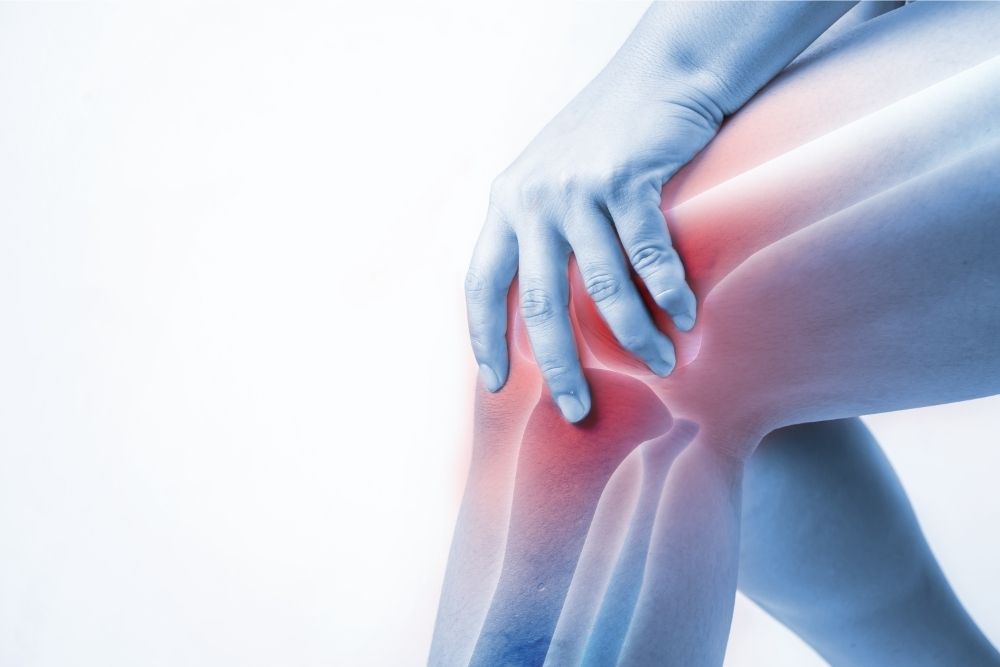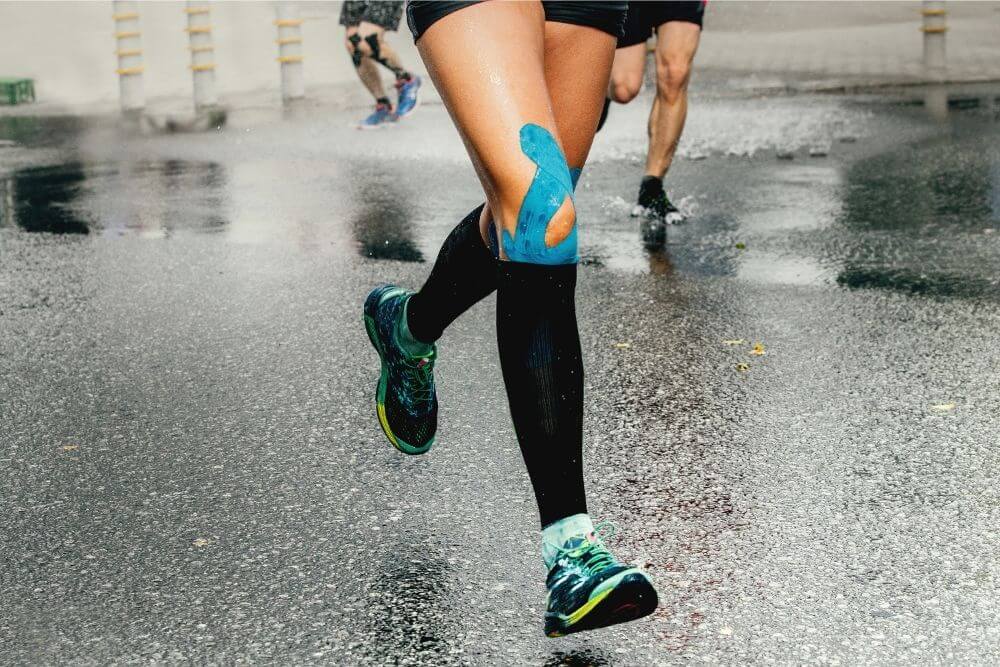Home Remedies for Knee Pain [Top Tips & Prevention Methods]
Knee pain is probably one of the most common aches people feel since we always use our legs. Whether you are an active athlete, a busy worker, or an older homebody, knee pain can strike at any time if you aren’t careful. Luckily, there are many home remedies for knee pain that can reduce physical discomfort and promote healing.
The first thing to do is figure out what is causing your knee pain. This can range from a chronic disease to a serious injury or a simple sprain. It’s important to figure out what’s causing your knee pain so you can better find a suitable home remedy that will work for you, keeping you active and healthy. Here is everything you need to know about knee injuries, how to heal them properly, and how to prevent further injuries in the future.
What Is Knee Pain?
Knee pain is when you feel discomfort in your knee, ranging from soreness to severe pain. You’ll often feel it when you use your knee by walking or bending your leg.
The knee is a hinge-type joint, meaning it has a limited range of motion. There are three bones:
- The tibia (in your lower leg)
- The femur (in your thigh)
- The patella (a.k.a. the kneecap)
There are also four ligaments that keep the bones in your knee in place. The bones slide smoothly together since they are wrapped in cartilage and have built-in shock absorbers. Knee pain will most commonly revolve around the functionality of these bones and ligaments making up the knee.

Is Knee Pain Common?
We use our knees a lot, even when we don’t realize it. Every time you walk, run, jump, or use the stairs. We use them when we sit, cross our legs, or stand back up. Because of how often we use our knees, it’s very common to experience knee pain no matter your age or health.
You’ve experienced knee pain if you have had any of these symptoms:
- Swelling
- Stiffness
- Redness
- Warm to the touch
- Popping or crunching sounds
- Weakness in your knee or leg
- Instability
- Can’t straighten your knee fully
While knee pain is pretty common to experience and can usually be cured with self-care routines and home remedies, you should see a doctor if you have more serious symptoms.
We advise that you call a doctor if:
- You can’t put weight on your knee
- It gives out
- If you are unable to fully extend or flex your knee
- If your knee or leg appears deformed or swollen
- The pain is severe
What Are the Common Causes of Knee Pain?
Since we use our knees so much, there are many reasons we may be experiencing pain in that area. Common causes of knee pain include injuries like torn cartilage and ruptured ligaments. Medical conditions like arthritis, gout and infections can also play a role.
What Causes Knee Pain Without Injury?
While injuries are usually the most common reason we experience knee pain, other reasons can also lead to aches and pains in our knees. Here are some of the most common.
- Obesity: Being overweight can put more pressure on your knee whenever you use your legs.
- Kneecap dislocation: This is when your kneecap slides out of position, causing pain and swelling.
- Exercise: Sometimes, your leg may just be sore from overuse. If you feel discomfort, take a break from exercise. Certain jobs can also lead to pain from overuse.
- Hip and foot pain: If you start walking differently, you may stress your knee joint.
- Arthritis: There are over 100 types of arthritis, most of which cause stress and pain in your joints, including the knee.
- Age: As you grow older, the cartilage in your knee will deteriorate. This can lead to knee pain and injury.
What Types of Injuries Can Cause Knee Pain?
Knee pain is a common side effect of many injuries. Here are some of the most common injuries that lead to knee pain.
- ACL injury: This is when your anterior cruciate ligament tears, which commonly occurs if you use your legs a lot. That’s why a lot of athletes suffer from this injury, especially basketball and soccer players who suddenly change direction.
- Fractures: During a fall or accident, you can break the bones in your knee (including the knee cap). Sometimes you can even get a fracture in these bones by walking wrong if you have weakened bones, like if you have osteoporosis.
- Knee bursitis: The bursitis is the small sac of fluid that acts as a cushion for your knee joint, allowing tendons and ligaments to glide smoothly over the joint. If this area of the knee becomes inflamed, you’ll feel sore and even experience injuries.
- Patellar tendinitis: This inflammation can happen when there’s an injury to the patellar tendon in your knee. This injury often happens to runners, cyclists, and athletes who jump a lot. You’ll feel irritation and soreness.
- Torn meniscus: This is cartilage that absorbs the shock between your shinbone and thighbone. You may tear your meniscus if you twist your knee while bearing weight on it, leading to severe pain and discomfort.
Home Remedies for Knee Pain
If you don’t have a serious injury, your knee pain can most likely improve with self-care. Some of these remedies don’t even require you to leave your home. So let’s take a look at some of the ways you can ease the discomfort you’re feeling.
Knee Brace
Knee braces provide additional support when recovering from an injured knee or help you get through strength exercises after surgery. Braces are usually a combination of metal, foam, and plastic. They come in different colors and designs. Talk to your doctor about which knee brace is right for your specific ailments.
Rest
If your knee feels sore, try to avoid overusing your leg, as this may result in further damage as you bend and jump. Sometimes all your knee needs to heal is rest. This might mean taking time off from the gym or even work. Talk to your boss about your health concerns. Make sure you’re getting a good amount of sleep each night to speed up the healing.
Ice
Applying ice to an achy knee can ease your discomfort because it narrows the blood vessels and decreases the blood flow to that area. That reduces inflammation, swelling, and soreness.
People usually ice their knees after an acute knee injury like a sprain or strain. This can also prevent tendonitis from progressing. Use an ice pack or frozen bag of vegetables to ice your knee. Wrap it in a towel if needed, making the temperature more tolerable on your skin. Do this for about 20 minutes at a time.
Heat
Unsurprisingly, heat has the opposite effect of ice. Heat increases blood flow to your joint by widening the blood vessels around your knee. This is more beneficial when you have a chronic knee issue, like arthritis. You’ll notice an improvement in flexibility and range of motion.
Use a heating pad that is warm but not very hot. Apply it to your knee for about 20 minutes. Heating pads can cause minor burns or damage to the skin if you have sensory issues, so try to avoid using them for sessions longer than 20 minutes.
CBD Salve
If you’re looking to soothe physical discomfort and feel relaxed and rested, CBD is a great home remedy. CBD is a natural compound found in the hemp plant. It’s one of a few hundred phytocannabinoids found in the plant, and it stands out due to its many benefits to your overall well-being.
CBD interacts with the receptors in your body’s endocannabinoid system (ECS), which are found in all of your body’s major systems. This includes the digestive, immune, and nervous systems. The most common benefits are reducing aches and soreness and helping you feel clear-minded and relaxed.
One of the best CBD products for knee pain would be CBD salve. This is a strong CBD lotion with a more concentrated amount of CBD, making the effects more potent. CBD salve is a great choice because it allows you to target the exact area where you’re experiencing discomfort.
Gently rub the CBD into the skin around your knee, and it will reach the receptors underneath. You may see reduced redness and feel your aches melt away. CBD will also allow you to get better and more regulated rest at night, helping you heal faster and get the relaxation you need.
Elevation
When you’re resting, keeping your leg (and knee) elevated can be a huge help. This reduces the flow of blood to damaged tissue, reducing swelling and inflammation.
Compression
Wrapping your knee in bandages can minimize swelling and also give you a sense of stability when you’re feeling a bit unbalanced.
Walking Aids
Even if your knee pain isn’t permanent, that doesn’t mean you can’t benefit from a crutch, cane, or splint. This can take the stress off of your knee and help you recover faster. After all, no one wants to further injure their knee after it’s already sore!

Simple Tips to Help Prevent Knee Pain
Knee pain is super common. That’s because so many things will lead to knee injuries. Luckily there are ways to prevent knee pain before it happens. Here are some important tips to keep in mind to avoid getting knee pain.
- Maintain a healthy weight: Extra pounds can strain your joints and increase the chance of getting injured. Osteoarthritis is also more common in patients that are overweight.
- Stay in shape: Don’t just jump into a sport. Take time for conditioning and practice so that you don’t overextend yourself and wind up injured from intense movements.
- Remember form: When you are conditioning and practicing, make sure that you use proper techniques and movements. Sometimes exercising or playing a sport incorrectly can result in serious injuries.
- Stay flexible: The leading cause of knee injuries? Weak muscles. Build up your leg muscles, including your quadriceps and hamstrings. This will help balance and stability, making sure you’re not as likely to get injured at work or the gym. Being flexible avoids tight muscles, which can also lead to injuries.
- Low impact exercise: Don’t push yourself to the extreme every workout. If you feel tired or sore, don’t overexert yourself. This can result in injuries that force you to take time off from exercising altogether.
- Good shoes: If you are active (whether it’s the gym, walking, or being on your feet at work), the pair of shoes you wear is important. Shoes without proper support can result in injuries due to the way you end up walking as a result.
- Choose new running locations: If you run a lot, pavement can start to hurt your knees due to the impact of your feet landing on a hard surface day after day. Try running on a track or trail, as this can reduce the likelihood of a running-related injury.
- Fall-proof your house: Falling can lead to an abundance of injuries, including knee pain. Make sure your room is well-lit, and things on the floor are put away. You don’t want to needlessly trip and fall.
- Contact a doctor: If you appear swollen around your knee or your leg feels uncomfortable at all, consider calling a doctor to preemptively ask for guidance. They may have a treatment or prevention plan to help keep you healthy and active.
Final Thoughts – Home Remedies for Knee Pain
Swelling. Aches. Unable to walk without a limp. Knee pain is, well, a pain. We use our knees a lot, whether it’s sitting in a chair and playing games or going for a run outside. Even just walking up the stairs with groceries requires healthy knees. Because we use our knees so much, it’s important to keep them healthy and safe. Consider quality shoes as well as balance and strength-related workouts.
If you are already experiencing knee pain, there are luckily many home remedies to reduce your discomfort. Using CBD salve, ice packs, and keeping your leg elevated can have a positive impact on your knees. If the pain is unbearable or you suspect you have a serious injury, always contact a doctor.





